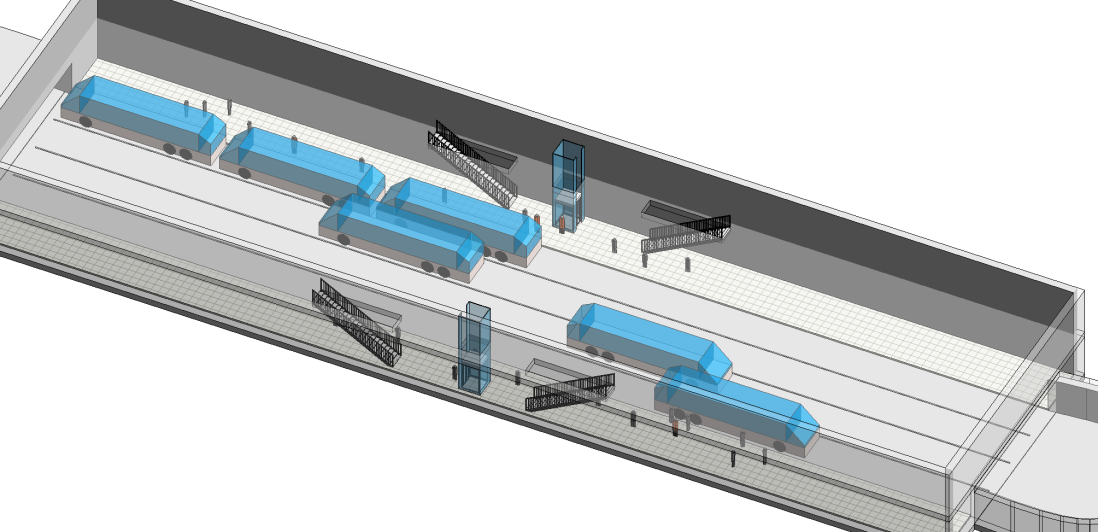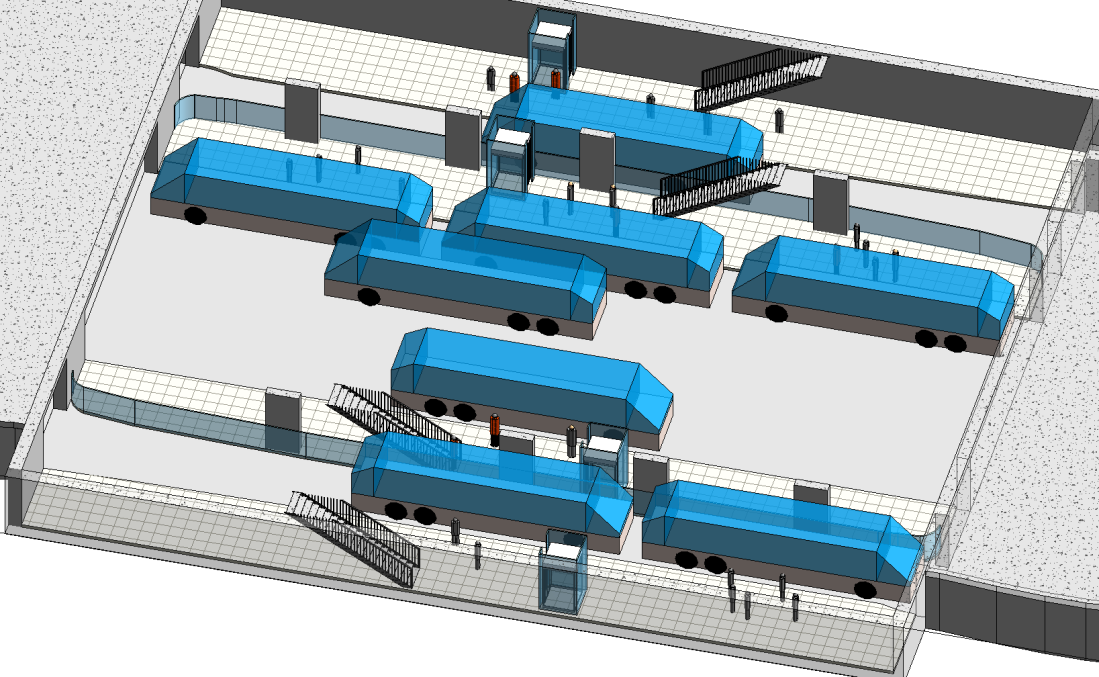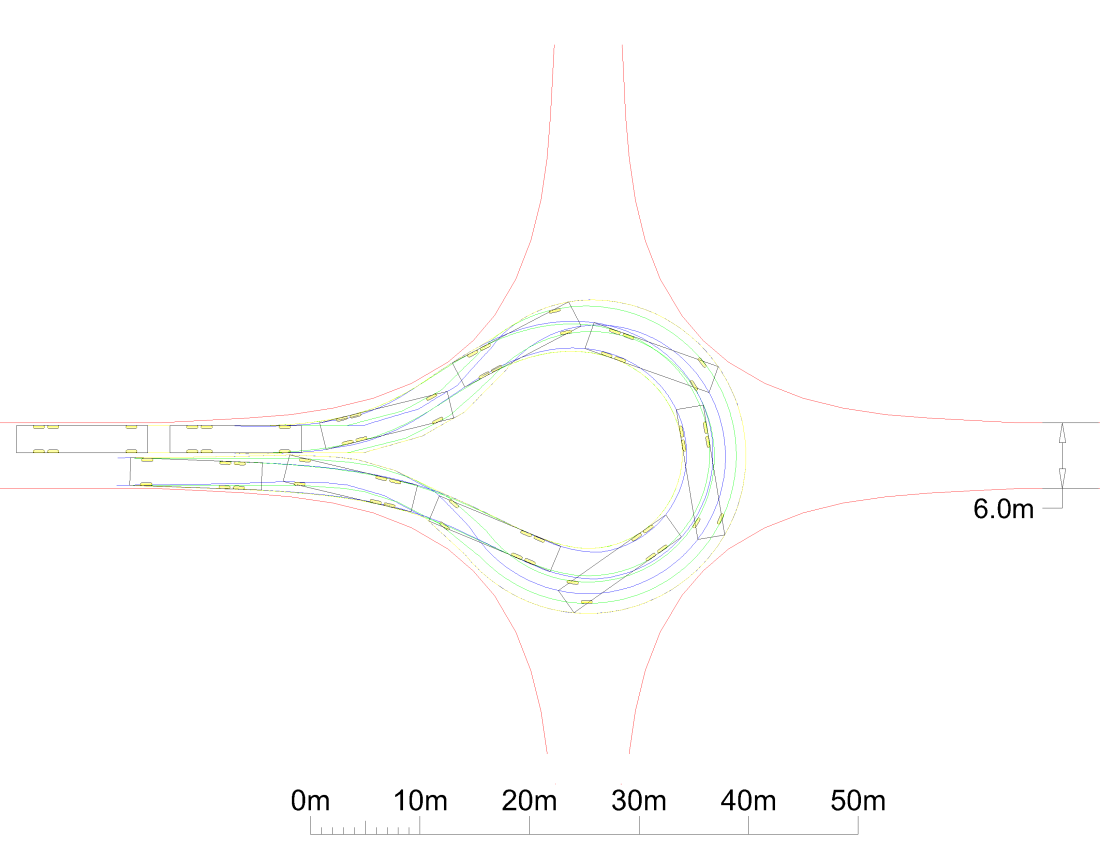Stops
To achieve 35000+ hourly passenger capacity, six stops should be provided in each direction at each station. Fewer steps can be provided if lesser capacity is required. Please see the Simulation and Capacity page for more information on capacities.
Vehicles can stop on the main line or a spur can be created to allow vehicles to pass each other in stops. For traditional line spurs are not required, however in the long term as system is expanded into on-demand usage, passing in stops is extremely useful to further increase capacity! Please see the Long Term Plan for more information.
Some possible six stop (per direction) station arrangements are presented below with relevant tracking diagrams.
Stations can be arranged as a 76m long and 21m wide box with 6 stops in a line or as 35x39m box with 3+3 stops in each directions. Different arrangements can be used at different stops depending on the local space constraints.




Tracking diagrams for the two stop types are presented below:

Junctions
Autonomous and centralised running allows for high capacity junctions to be achieved with minimum space constraints. Simple T or X junctions are preferable. There is no real need for complex multi-level junctions because well controlled level junctions will not impact the overall capacity of the link – all vehicles should be able to pass through the junctions with minimum or no slowdown.
Please see links below demonstrating how junctions can be controlled and optimised with autonomous vehicle operation:
https://www.citylab.com/life/2012/03/what-intersections-would-look-world-driverless-cars/1377/
It can be useful to create oversized junctions where possible which would allow U-turns for vehicles. Please see the tracking diagram below showing an example of such a junction:

(c) Marko Nesovic all rights reserved
2 thoughts on “Stops and Junctions”